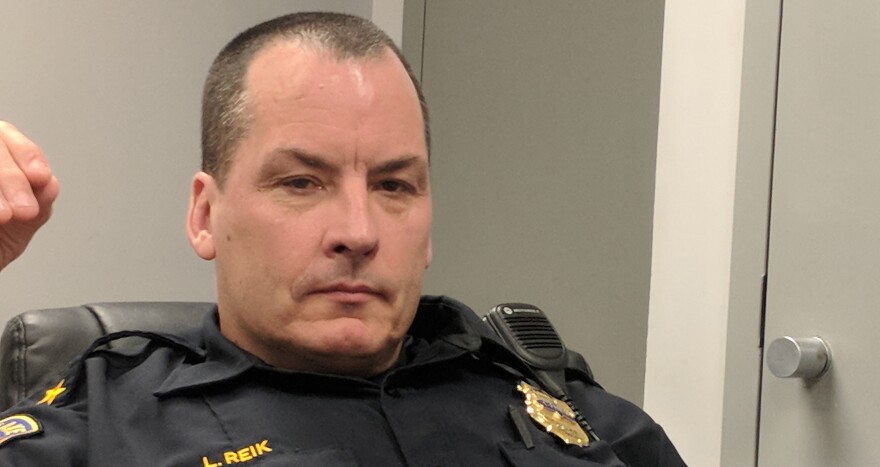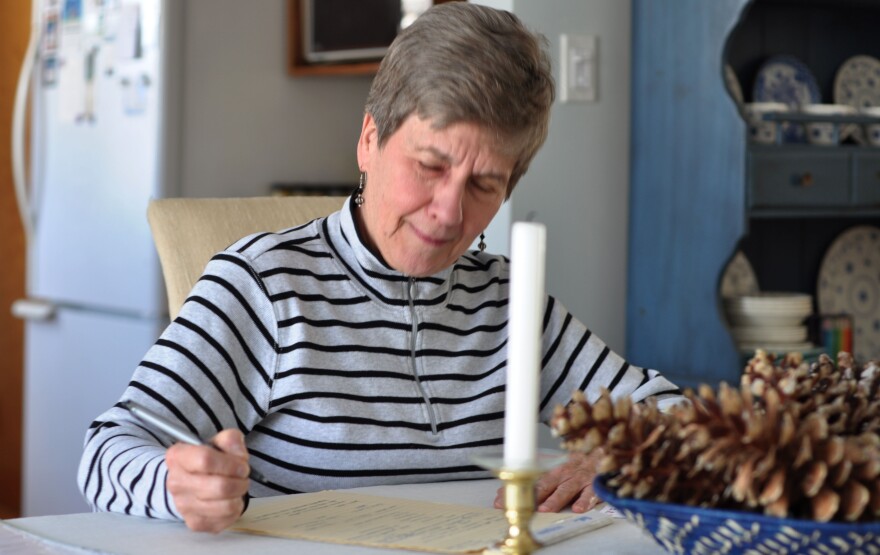Dave Lima is a 75-year-old retired social worker, and in front of him on his kitchen table at his house in Mentor sit stacks of police use-of-force incident reports from departments across Northeast Ohio.
For the last year-and-a-half, Lima has led a group of 35 volunteers from the group Showing up for Racial Justice, or SURJ. They’ve been requesting these use-of-force reports from 40 police departments.
Incident Number 16-00760
“Oh, yeah, this is it, it’s incident number 16-00760,” said Lima, after searching through one of the stacks.
This one was from a 2016 incident in Eastlake, a suburb ten miles east of Cleveland. A suspect was restrained on a gurney, having a mental health episode.
During a struggle, he spit into an Eastlake officer’s face. The officer responded by punching him. That’s all the report described.
“I noticed that there was a video that was made by the hospital, in the emergency room where this incident took place, and it was titled - assault on a patient,” said Lima.
He saw something on the video that was left out of the report. Lima counted eight seconds of what he saw as choking by the officer.
To him, it seemed like an excessive use-of-force. So Lima requested a meeting with the Chief of Police Larry Reik.
“We talked and he said he was going to reconsider the case,” said Lima. “I don't know what happened.”
And in Eastlake, Chief Reik saw the incident Lima came to him about differently.
“There was nothing, no restraint against the neck or anything,” said Reik. “After he was struck, the side of his face was kind of pushed down on the gurney.”
Reik was named chief seven years ago after almost 20 years with the department. He engages people when they come to him concerned about police conduct.
But, as for outside oversight, Reik is skeptical.
“I don’t think that has really affected any, definitely no Northeast Ohio communities I’m aware of,” said Reik. “We use the word ‘partnership’ a lot more often, whether it’s through police athletic leagues or civic groups.”
The History of Civilian Oversight of the Police
Included in the City of Cleveland’s consent decree is a requirement to strengthen community oversight of the police. In smaller communities, there are no oversight agencies like the ones Cleveland is setting up.
According to a report by the National Association for Civilian Oversight of Law Enforcement, the first civilian review boards were created in the 1940s to hear citizen complaints. But those were typically made up of volunteers with little money to spend.
Then independent investigative bodies became popular, but those were rarely given much authority.
Recently, the police auditor or inspector general has become a preferred option. Cleveland is in the process of hiring one.
Samuel Walker teaches at the University of Nebraska at Omaha and worked on police oversight issues for 44 years. Walker said a civilian inspector general is the most effective way to do oversight.
“They can audit use-of-force incidents and look at the use-of-force reports, see if there are patterns of racial bias in uses-of-force, see if there are problems with the police department's internal affairs investigations of those reports,” said Walker.
These developments haven’t made their way to smaller departments in Northeast Ohio.
SURJ and The City of Euclid
Dee Beacham is in Dave Lima’s use-of-force group and lives in Euclid.
Five months after an unarmed black man named Luke Stewart was killed by police, Beacham and other members of SURJ joined Black Lives Matter at a Euclid City Council meeting.
She said they were there to press for more information on the shooting.
“I think we have to support people that are going through something that happened to them that they can’t understand because no one will sit down and explain it to them,” said Beacham.
The mayor of Euclid, who was unavailable to comment for this story, did speak to protestors after they were removed from the meeting.
Some law enforcement leaders, like in Eastlake, have been open to discussion with SURJ. Others have not.
Dave Lima and his group’s efforts haven’t led to any concrete changes yet – no changed policies, no reassignment of officers, no reversal of a justified use-of-force finding.
But Lima isn’t frustrated by that. “The idea is we want police departments to know – someone is watching,” said Lima.



![Dave Lima, head of SURJ's use-of-force working group, says the goal is to let police departments know someone is watching. [Matt Richmond / ideastream]](https://npr.brightspotcdn.com/dims4/default/6ec8aa3/2147483647/strip/true/crop/3000x1592+0+0/resize/880x467!/quality/90/?url=http%3A%2F%2Fnpr-brightspot.s3.amazonaws.com%2Flegacy%2Fuploads%2F2018%2F3%2F04%2Fdavelima_web_0.jpg)


